Strong cold air invades China’s blizzard, cold wave, strong wind and strong convection.
CCTV News:This morning (November 5), the Central Meteorological Observatory also issued an orange warning for blizzard, a blue warning for cold wave, a blue warning for strong wind and a blue warning for severe convective weather. It is estimated that in the next three days, affected by strong cold air, there will be different degrees of cooling in most parts of China. Today and tomorrow, there will be large-scale heavy snowfall in parts of eastern and northeastern Inner Mongolia, and there will be heavy snowstorms or heavy blizzards in the local area. The local snowfall in Heilongjiang may exceed the historical extreme value in the same period; There are strong convective weather such as thunderstorms and short-term heavy rainfall in Jiangnan and South China, which mainly occurs from day to night today. There will be strong windy weather in parts of the north and parts of the Bohai Sea, the Yellow Sea and the East China Sea, and the winds in the Bohai Strait and other places can reach 9. Generally speaking, the weather situation is more complicated, and various types of weather have a great impact on China, reminding the public to pay close attention to local weather changes and take corresponding preventive measures.
Blizzard orange warning:From 08: 00 on November 5 to 08: 00 on November 6, there were heavy blizzards in parts of central and eastern Inner Mongolia, northern Hebei, northwestern Liaoning and southeastern Heilongjiang, including local blizzards (20 ~ 22 mm) in southeastern Inner Mongolia and southeastern Heilongjiang. The depth of newly added snow in some areas above is 5-10 cm, and the local area can reach more than 15 cm.
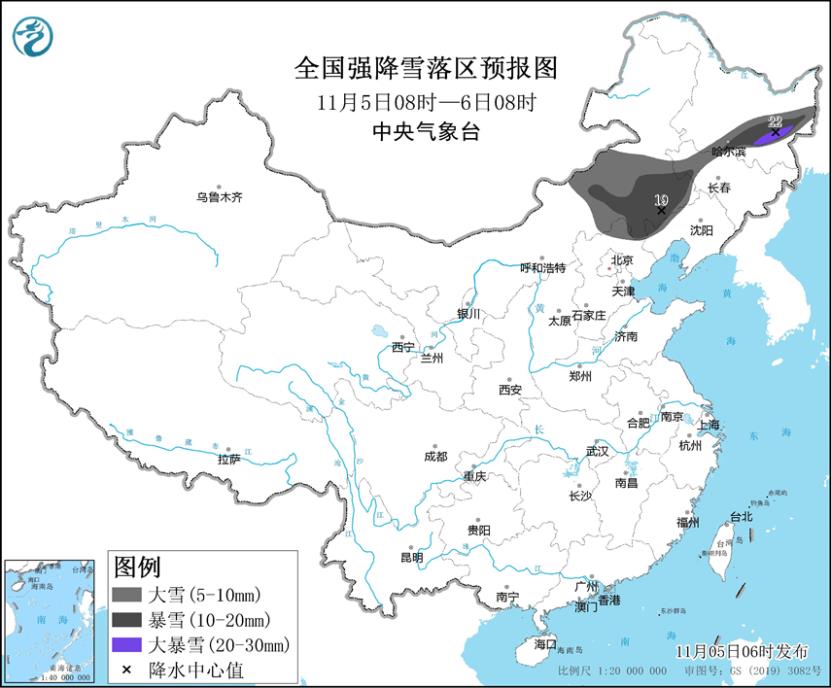
Tomorrow will be the strongest period of heavy snowfall in Northeast China (08: 00 on the 6th to 08: 00 on the 7th), and there will be heavy snowstorms to heavy blizzards in parts of southeastern Inner Mongolia, central and eastern Heilongjiang, central and western Jilin and central and northern Liaoning, including heavy blizzards (30-38mm) in southern and eastern Heilongjiang and northern Jilin. There is freezing rain in the central and western Jilin and southern Heilongjiang. The depth of newly added snow in the above areas is 10 ~ 20cm, and the local area can reach more than 25cm.
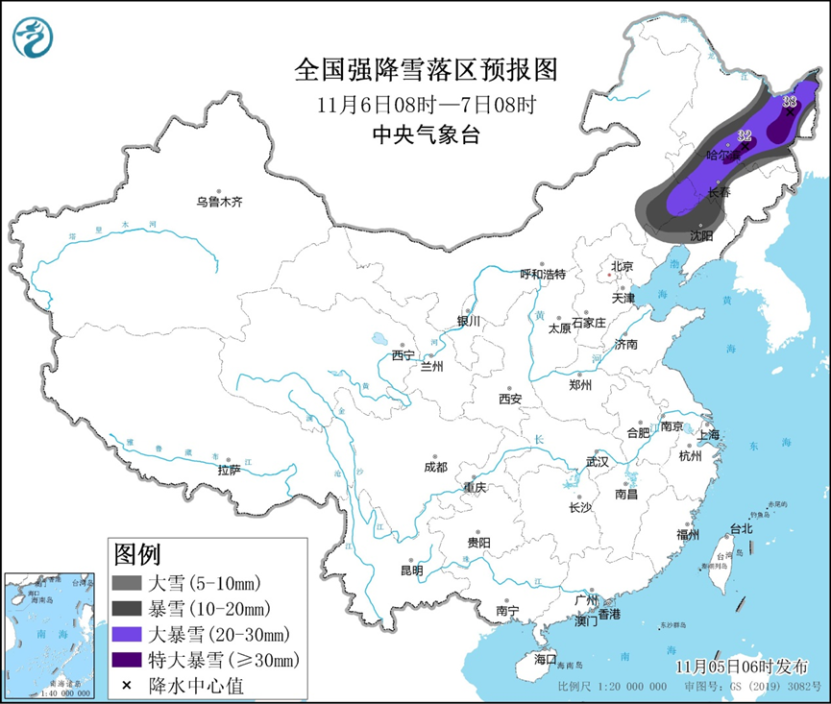
Cold wave blue warningAnd gale blue warning:Affected by strong cold air, it is predicted that the temperature in the eastern part of northwest China and most parts of central and eastern China will drop by 6 ~ 10℃ from 08: 00 on November 5 to 20: 00 on November 7. Among them, the temperature in parts of central and eastern Inner Mongolia, central and southern Northeast China and central and eastern Jianghuai will drop by 12 ~ 14℃, and the local temperature drop can reach more than 16℃ in southeastern Inner Mongolia, southwestern and eastern Jilin, central and northern Liaoning and central and northern Jiangsu. The lowest temperature appeared on the morning of the 7th, and the lowest temperature 0℃ line will be located in northern Hebei, southern Beijing, southwestern Shanxi, Guanzhong Plain in Shaanxi and southeastern Gansu, and the lowest temperature in most areas along the Yangtze River will drop to about 10℃. There are 4 ~ 6 northerly winds in the north of the middle and lower reaches of the Yangtze River, and the gusts are 7 ~ 9, and the local level can reach 10; From 5th to 6th, there were 6-8 winds in Bohai Sea, Yellow Sea and East China Sea, and the maximum gust was 9-10.
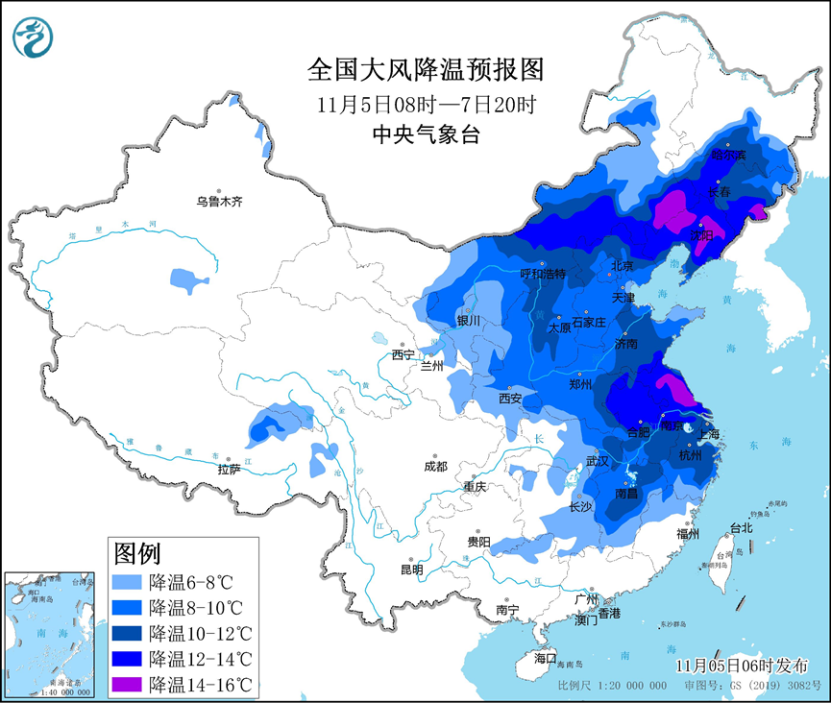

Blue warning of severe convective weather:From 08: 00 on November 5 to 08: 00 on November 6, there will be 8 ~ 10 thunderstorms or hail weather in parts of southern Anhui, north-central Jiangxi, south-central Hunan, southern Guizhou and north-central Guangxi; There will be short-term heavy precipitation in parts of central and southern Anhui, central Jiangsu, western Zhejiang, central and northern Jiangxi, eastern Hubei, most of Hunan, southern Guizhou, most of Guangxi, Hainan Island and other places, with a maximum hourly rainfall of 30-40 mm and a local area of more than 50 mm.
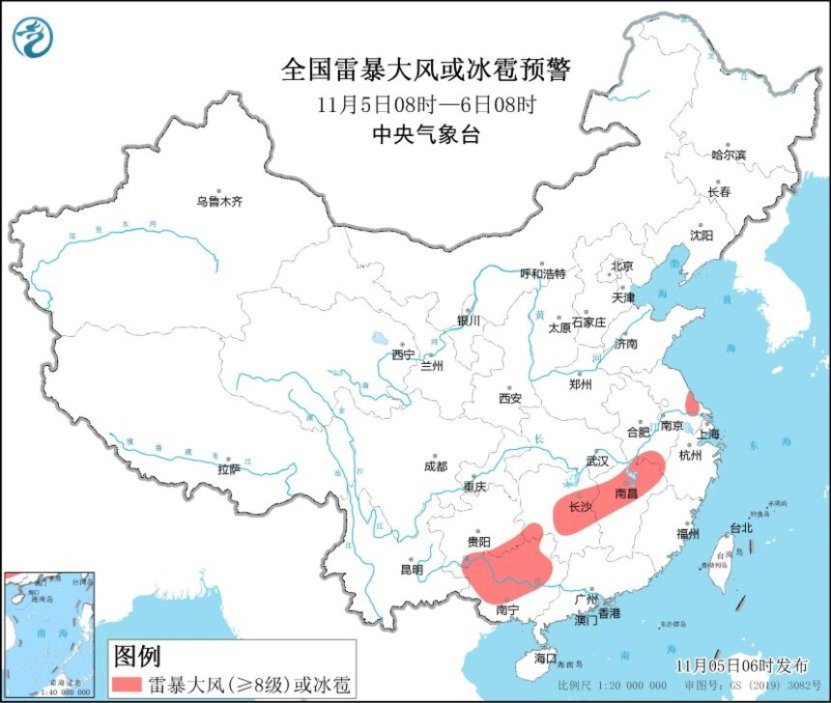
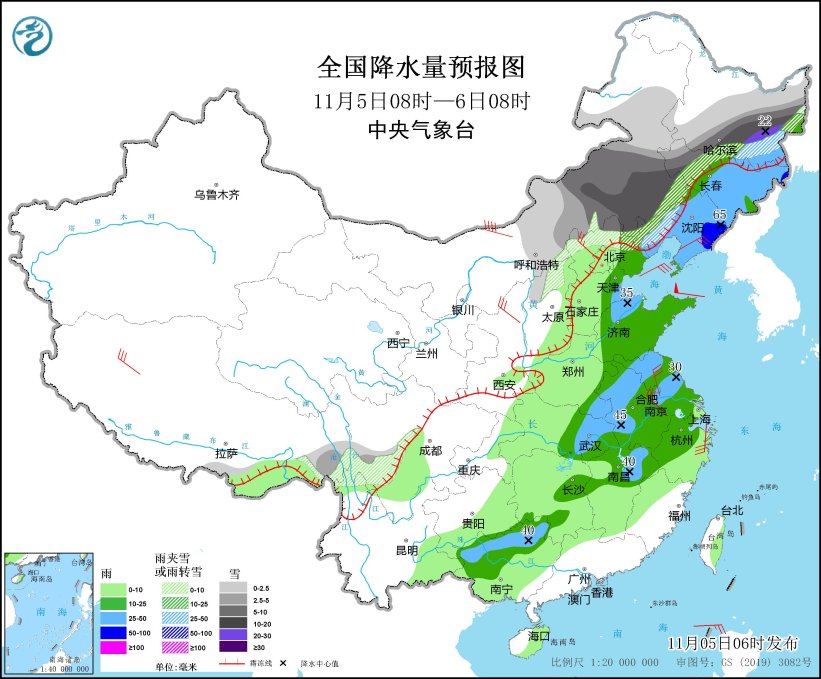
Meteorologists reminded that since November, cold air activities have been frequent and strong. It is expected that after the end of this round of cold air, there will be supplementary cold air activities on November 7-8, and the temperature in most parts of China will gradually decrease. In addition, due to the high temperature in the early stage in Northeast China, some areas will experience the phase change from rain to sleet and then to snow, and the local snowfall is extreme, or it breaks through the historical extreme value in the same period. We should pay special attention to the adverse effects that heavy snowfall may bring to production and life, and the elderly, children and people with weak physique should try to reduce going out during snowfall.